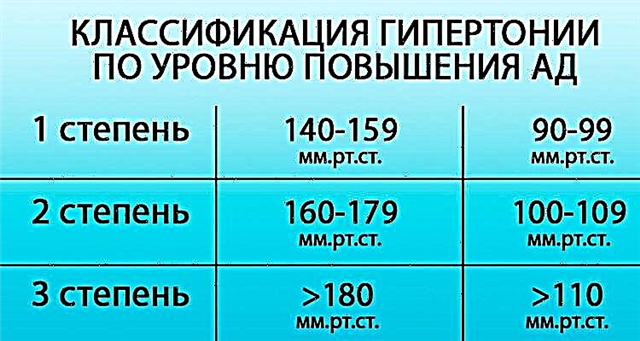The systems of the superior and inferior vena cava enter the system of the systemic circulation and directly flow into the right atrium. These are the two largest venous collectors that collect oxygen-poor blood from internal organs, the brain, and the lower and upper extremities.
Topography of the inferior and superior vena cava
 The superior vena cava (SVC) is presented as a short trunk, which is located in the chest to the right of the ascending part of the aorta. It is 5-8 cm long and 21-28 mm in diameter. It is a thin-walled vessel that has no valves and is located in the upper part of the anterior mediastinum. Formed from the fusion of two brachiocephalic veins behind the I sternocostal joint on the right. Further, going down, at the level of the cartilage of the III rib, the vein flows into the right atrium.
The superior vena cava (SVC) is presented as a short trunk, which is located in the chest to the right of the ascending part of the aorta. It is 5-8 cm long and 21-28 mm in diameter. It is a thin-walled vessel that has no valves and is located in the upper part of the anterior mediastinum. Formed from the fusion of two brachiocephalic veins behind the I sternocostal joint on the right. Further, going down, at the level of the cartilage of the III rib, the vein flows into the right atrium.
Topographically, on the right to the superior vena cava, the pleural leaf with the phrenic nerve is adjacent, on the left is the ascending aorta, in front is the thymus, behind is the root of the right lung. The lower part of the SVC is located in the pericardial cavity. The only tributary of the vessel is the azygos vein.
ERW inflows:
- brachiocephalic veins;
- steam room and nameless;
- intercostal;
- veins of the spinal column;
- internal jugular;
- plexus of the head and neck;
- sinuses of the dura mater of the brain;
- emissary vessels;
- veins of the brain.
The SVC system collects blood from the head, neck, upper extremities, organs and walls of the chest cavity.
The inferior vena cava (IVC) is the largest venous vessel in the human body (18-20 cm long and 2-3.3 cm in diameter) that collects blood from the lower extremities, pelvic organs and the abdominal cavity. It also does not have a valve system, it is located extraperitoneally.
IVC begins at level IV-V of the lumbar vertebrae and is formed by the fusion of the left and right common iliac veins. Then it follows upwardly in front of the right psoas major muscle, the lateral part of the vertebral bodies and, above, in front of the right crus of the diaphragm, lies next to the abdominal aorta. The vessel enters the chest cavity through the tendon opening of the diaphragm into the posterior, then the superior mediastinum and flows into the right atrium.
The IVC system is one of the most powerful collectors in the human body (it provides 70% of the total venous blood flow).
Inflows of the inferior vena cava:
- Parietal:
- Lumbar veins.
- Lower diaphragmatic.
- Internal:
- Two ovarian veins.
- Renal.
- Two adrenal glands.
- External and internal iliac.
- Hepatic.
Anatomy of the venous apparatus of the heart: how does it work?
Veins carry blood from organs to the right atrium (with the exception of the pulmonary veins, which transport it to the left atrium).
The histological structure of the venous vessel wall:
- internal (intima) with venous valves;
- elastic membrane (media), which consists of circular bundles of smooth muscle fibers;
- external (adventitia).
IVC refers to the veins of the muscle type, in which well-developed bundles of longitudinally located smooth muscle cells are present in the outer shell.
In the SVC, the degree of development of muscular elements is moderate (rare groups of longitudinally located fibers in adventitia).
 Veins have many anastomoses, form plexuses in organs, which ensures their greater capacity compared to arteries. They have high stretch properties and relatively low elasticity. Blood moves along them against the force of gravity. Most veins have valves on the inner surface that prevent backflow.
Veins have many anastomoses, form plexuses in organs, which ensures their greater capacity compared to arteries. They have high stretch properties and relatively low elasticity. Blood moves along them against the force of gravity. Most veins have valves on the inner surface that prevent backflow.
The movement of blood through the vena cava in the heart is provided by:
- negative pressure in the chest cavity and its fluctuation during breathing;
- suction ability of the heart;
- the work of the diaphragmatic pump (its pressure during inhalation on the internal organs pushes blood into the portal vein);
- peristaltic contractions of their walls (with a frequency of 2-3 per minute).
Vascular function
Veins, together with arteries, capillaries and heart, form a single circle of blood circulation. Unidirectional continuous movement through the vessels is ensured by the pressure difference in each segment of the channel.
The main functions of the veins:
- deposition (reserve) of circulating blood (2/3 of the total volume);
- return of oxygen-depleted blood to the heart;
- saturation of tissues with carbon dioxide;
- regulation of peripheral circulation (arteriovenous anastomoses).
What symptoms bother the patient in case of impaired blood flow through the vena cava?
The main pathology of the caval veins is their complete or partial obstruction (occlusion). Violation of the outflow of blood through these vessels leads to an increase in pressure in the vessels, then in the organs from which there is no adequate outflow, their expansion, extravasation (release) of fluid into the surrounding tissues and a decrease in the return of blood to the heart.
The main signs of impaired outflow through the vena cava:
- swelling;
- discoloration of the skin;
- expansion of subcutaneous anastomoses;
- lowering blood pressure;
- dysfunction of organs from which there is no outflow.
Superior vena cava syndrome in men
This pathology is more common between the ages of 30 and 60 (in men, 3-4 times more often).
Factors provoking the formation of cava syndrome:
- extravasal compression (external compression);
- germination by a tumor;
- thrombosis.
The reasons for the violation of the patency of the SVC:
- Oncological diseases (lymphoma, lung cancer, breast cancer with metastasis, melanoma, sarcoma, lymphogranulomatosis).
- Aortic aneurysm.
- Enlargement of the thyroid gland.
- Infectious lesion of the vessel - syphilis, tuberculosis, histioplasmosis.
- Idiopathic fibrous mediastinitis.
- Constrictive endocarditis.
- Complication of radiation therapy (adhesive process).
- Silicosis.
- Iatrogenic injury - blockage with prolonged catheterization or a pacemaker.
SVC occlusion symptoms:
- severe shortness of breath;
- chest pain;
- cough;
- asthma attacks;
- hoarseness of voice;
- swelling of the veins of the chest, upper extremities and neck;
- puffiness, swelling of the face, edema of the upper extremities;
- cyanosis or congestion of the upper half of the chest and face;
- difficulty swallowing, laryngeal edema;
- nosebleeds;
- headache, tinnitus;
- decreased vision, exophthalmos, increased intraocular pressure, drowsiness, convulsions.
Inferior vena cava syndrome in pregnant women
During the period of gestation, the constantly enlarging uterus in the supine position presses on the inferior vena cava and abdominal aorta, which can lead to a number of unpleasant symptoms and complications.
In addition, the situation is aggravated by an increase in the volume of circulating blood necessary for the nutrition of the fetus.
Latent manifestations of IVC syndrome are observed in more than 50% of pregnant women, and clinically - in every tenth (severe cases occur with a frequency of 1: 100).
As a result of vascular compression, the following is observed:
- decreased venous return of blood to the heart;
- deterioration of blood oxygen saturation;
- decreased cardiac output;
- venous congestion in the veins of the lower extremities;
- high risk of thrombosis, embolism.
Symptoms of aorto-caval compression (occur in the supine position more often in the III trimester):
- dizziness, general weakness and fainting (due to a drop in blood pressure below 80 mm Hg);
- feeling of lack of oxygen, darkening in the eyes, tinnitus;
- sharp pallor;
- palpitations;
- nausea;
- cold clammy sweat;
- edema of the lower extremities, manifestation of the vascular network;
- haemorrhoids.
This condition does not require drug treatment. A pregnant woman needs to follow a number of rules:
- do not lie on your back after 25 weeks of pregnancy;
- do not perform exercises while lying down;
- rest on the left side or half-sitting;
- use special pillows for pregnant women during sleep;
- walk, swim in the pool;
- in childbirth, choose a position on the side or squatting.
Thrombosis
Blockage of the superior vena cava by a thrombus is often a secondary process due to tumor growth in the lungs and mediastinum, a consequence of mastectomy, catheterization of the subclavian or jugular veins (with the exception of Paget-Schrötter syndrome).
In the case of complete occlusion of the lumen, the following rapidly occurs:
- cyanosis and edema of the upper torso, head and neck;
- inability to take a horizontal position;
- severe headache and chest pain, aggravated by bending the body forward.
Causes of thrombosis of the inferior vena cava:
- Primary:
- Tumor process.
- Birth defects.
- Mechanical damage.
- Secondary:
- Germination of the vessel wall by a tumor.
- Prolonged external compression of the vein.
- Ascending spread of a blood clot from the lower sections (the most common cause).
The following types of IVC thrombosis are clinically distinguished:
- Distal segment (most common localization). Symptoms are less pronounced due to the good compensatory capabilities of collateral blood flow. The patient develops signs of ileofemoral thrombosis - increasing swelling of the ankles, extending to the entire limb, lower abdomen and lower back, cyanosis, bursting sensations in the legs.
- Renal segment. The course is difficult, has a high mortality rate and requires surgical correction. Clinically manifests itself in the form of severe back pain, oliguria, the presence of protein in the urine, microhematuria, vomiting, and increasing renal failure.
- Hepatic segment. The clinic of suprahepatic portal hypertension is developing: an increase in organ size, jaundice, ascites, manifestation of venous plexuses on the anterior surface of the abdomen, varicose veins of the lower third of the esophagus (with the risk of gastrointestinal bleeding), splenomegaly.
Diagnostics and clarification
To establish the cause of the obstruction of blood flow through the vena cava system and select further tactics, a number of diagnostic procedures are shown:
- History taking and physical examination.
- Complete blood count, biochemistry, coagulogram.
- Doppler ultrasound and duplex scanning of veins.
- Plain X-ray of the chest and abdominal organs.
- CT, MRI with contrast.
- Magnetic resonance phlebography.
- Measurement of central venous pressure (CVP).
Treatment methods
The choice of patient management tactics depends on the cause of the impaired blood flow in the portal veins.
Today, almost all cases of thrombosis are treated conservatively. Studies have shown that after thrombectomy, clot fragments remain on the vessel wall, which later serve as a source of re-blockage or the development of a formidable BODY complication (pulmonary embolism).
Compression of the vessel by a volumetric formation or tumor invasion of the vein walls requires surgical intervention. The prognosis of conservative management of the disease is unfavorable.
Surgical methods
Types of surgical interventions for vena cava thrombosis:
- endovascular thrombectomy with Fogarty catheter;
- open clot removal;
- palliative plication of the vena cava (artificial formation of the lumen with U-shaped staples);
- installation of a cava filter.
When the vessel is compressed from the outside or metastatic lesion, palliative interventions are performed:
- constriction site stenting;
- radical decompression (removal or excision of a tumor formation);
- resection of the affected area and its replacement with a venous homograft;
- shunting of the obliterated area.
Drug treatment
The most effective method of conservative treatment for deep vein clotting is thrombolytic therapy (Alteplase, Streptokinase, Aktilize).
Criteria for choosing this treatment method:
- age of thrombotic masses up to 7 days;
- no history of acute disorders of cerebral blood flow in the last 3 months;
- the patient did not undergo surgical manipulations for 14 days.
Additional drug support scheme:
- Anticoagulant therapy: "Heparin", "Fraxiparin" intravenously drip with a further transition to subcutaneous administration.
- Improvement of the rheological qualities of blood: "Rheosorbilact", "Nicotinic acid", "Trental", "Curantil".
- Venotonics: Detralex, Troxevasin.
- Non-steroidal anti-inflammatory: "Indomethacin", "Ibuprofen".
Conclusions
Violation of blood flow through the vena cava system is a pathological condition that is difficult to treat and has a high mortality rate. Also, in 70% of cases, reocclusion or re-thrombosis of the affected segment is observed during the year. The most common fatal complications are: BODY, major ischemic stroke, acute renal failure, esophageal variceal bleeding and cerebral hemorrhage.
In the case of tumor vascular lesions, the prognosis is unfavorable. Treatment is palliative in nature and is aimed only at relieving existing symptoms and some continuation of the patient's life.



